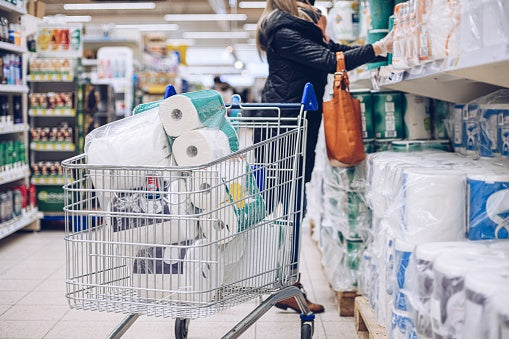The basic composition of toilet paper (in a professional sense, it should be called household paper) is bamboo fiber. Bamboo fiber has a characteristic, that is, there are abundant hydroxyl groups (-OH) on the fiber surface, and it is these hydroxyl groups that enable the fibers of the paper to bond together to form a paper (of course, some other substances can be added to further strengthen this combination) .
Then the problem comes. For papers such as books, magazines, and magazines, it is very beneficial to have a good bond between fibers, because the strength of the paper is very good, and it is not easy to break when used. But for household paper, it is not entirely a good thing.
The strength of the paper is too good, which means that the paper will be very hard and dense, and you can imagine how it feels when you use it. Therefore, household paper needs to control the degree of bonding between fibers, so that the paper feels looser and softer, that is, it cannot be too weak and easy to break when used, and it cannot be too strong and too hard when used.
So how?
LAYered! Professional research shows that under the same weight, the softness and bulk of paper divided into multiple layers is much better than that of non-layered paper. why? First, after being divided into multiple layers, relative sliding will occur between the layers of the paper, giving people the feeling that the paper is not so "stiff" but softer.
Second, after being divided into multiple layers, the inside of the paper has a lot of pores, which reduces the combination of hydroxyl groups between fibers, and the paper feels much softer. Because the gram weight (weight per square meter) of tissue paper is about 15g per layer.
So, what are layers? It is such a single layer of paper as thin as a cicada's wing, with many meshes. That is to say, there is a lot of air between the bamboo fibers of the paper (pores) and between the layers of the paper to replace the original hydroxyl bonds, so that the number of hydroxyl bonds in the paper decreases geometrically. So it becomes soft, which is equivalent to the effect of mixing sand or yeast into the clay.
2 Plys vs 3 Plys: Which Is Better?
When looking at whether 2-ply or 3-ply is better, it somewhat depends on what you're looking for. 3-ply paper has an extra layer, which generally makes it stronger and softer since it has two layers of cushioning. 2-ply toilet paper, usually the weakest of all toilet papers, yet it breaks down the most.
However, our products are made from bamboo, so if you have a weak plumbing system, choosing our bamboo range may suit you best. If you are looking for more strength and softness - 3 ply toilet paper will be your better choice. If you really care about these two qualities, then you should go for 3 layers.
Should you be using 3ply paper?
For paper used at home, I personally recommend using two or three layers. But it also varies from person to person. Just a small suggestion for everyone, so that not only will it not be wasted.
As far as I know, there are two layers, three layers, and four layers of napkins. The uses are different. The two layers are relatively thin. It may be fine for wiping hands, but not enough for places with a lot of water I used it, three layers are added on the basis of two layers tissue bamboo, which is a little more suitable. The third layer is an intermediate product. It is a relatively cost-effective product. I see that the four-layer napkins are used by players who play ball to wipe sweat. It is said to be very easy to use.
Three-ply paper is traditionally the best choice for strong and softest toilet paper. Unfortunately, the 2-tier offering is still a bit weaker than what most people are looking for, and the 4-tier offering is overly luxurious. It's always wise to evaluate your plumbing system when choosing toilet paper - if you have a very weak system, then 3 ply will work for you.
Lovely Poo Poo Bamboo Paper: The Best Eco-Friendly Toilet Roll
Today, it's important that we all do what we can to limit our dependence on natural resources, curb our energy use and waste emissions, and make smart, sustainable choices in all aspects of our lives. Recycling paper products is just one way to give back to the planet.
However, you may also want to invest in sustainable paper alternatives. This is where roll paper comes in.
Our tree-free paper products are made from 100% bamboo fiber. Free of ink, dye, BPA and plastic, they are 100% biodegradable and 100% soft. They also come conveniently delivered to your door in a 100% recyclable eco-friendly box.












